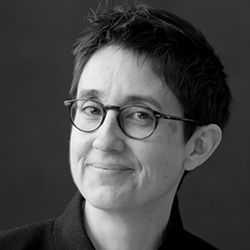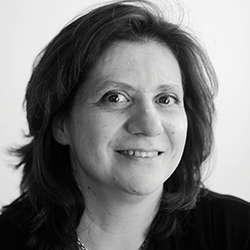Woolley on "Encouraging Women to Persist in Math and Science"
Catherine Woolley on "Encouraging Women to Persist in Math and Science"
Catherine Woolley, William Deering Professor in the Department of Neurobiology, was recently featured in Weinberg Magazine. An excerpt of the article can be found below.
Beyond the Comfort Zone
By Anne Stein
 Among top research institutions, Northwestern's male-female ratio of faculty in the math and sciences is typical. Among 22 full professors in the Department of Physics and Astronomy, three are women. Kra is the only woman among 18 full professors in Mathematics. Odom is one of two women among 22 full professors whose primary appointment is in Chemistry.
Among top research institutions, Northwestern's male-female ratio of faculty in the math and sciences is typical. Among 22 full professors in the Department of Physics and Astronomy, three are women. Kra is the only woman among 18 full professors in Mathematics. Odom is one of two women among 22 full professors whose primary appointment is in Chemistry.
The scarcity of female professors isn't for lack of trying, explains Odom. One factor contributing to the disparity is what's commonly known as the "two-body problem," and reflects the high tendency of female academics to partner with other academics. Universities often find that a faculty candidate won't accept a job offer unless an offer is made to his or her partner as well. That may not be feasible when both candidates are in a similar field — as is often the case with women in STEM disciplines.
"If you want a woman scientist, 90 percent of the time she has a partner who's also a scientist. To be hired at an institution such as Northwestern, they both need to be excellent and leaders in their fields," says Odom, whose husband is an assistant professor of physics and astronomy at the University. Larger institutions can help by creating more opportunities for couples in STEM fields, she adds.
But even before they reach that level, the ranks of female mathematicians and scientists are thinned by attrition at the post-doctoral level, when couples frequently move. Often, "the woman will either not apply for a post-doc position or she'll wait until her husband applies and then apply where he goes, which narrows her options," says Kalogera, co-founder and director of Northwestern's Center for Interdisciplinary Exploration and Research in Astrophysics (CIERA)."Culturally, it (can be) more comfortable for a woman to say, 'I'll stay at home and start a family or be with the kids for a few years while my partner works.' It's much less likely for the guy to say this."
Some women might get discouraged early by the combative nature of defending one's work. "There's a lot of criticism involved in science," says Woolley. "You present your work and part of what I do is find what's good in it as well as the flaws. Your job is to defend against my criticism. Speaking very generally, I find that girls and women are less likely to enjoy that combativeness. Among the students in my class, I've seen boys tending to view competition and confrontation more often as an opportunity to win, and girls tending to view it more often as a chance to lose."
In addition, says Woolley, women are often at a disadvantage when it comes to social cues used to ascertain dominance and authority. "We're smaller and our voices aren't as deep. And often girls are socialized to be pleasant, to defer and be likeable, so we (tend to) fall back on likability if we're not able to assert authority. In some ways that works, and in many ways it doesn't. In a career that's based upon persuading people that what you're doing is good and in fact better than what most people in your field are doing, those kinds of cues are really important."
Kalogera recalls elbowing her way into discussions during coffee breaks at conferences when she was a graduate student. "I'm short, especially compared to Americans and guys," says the Greek-born Kalogera. "I realized then that there's a long history of discrimination that up until rather recently was accepted and considered normal. It's hard to get rid of that over one or two generations."
Such discrimination, Kalogera believes, isn't based on malice but is often unconscious. Indeed, the Yale researchers found that the bias they uncovered among faculty was "independent of their gender, scientific discipline, age, and tenure status," suggesting that it is "unintentional (and) generated from widespread cultural stereotypes rather than a conscious intention to harm women."
But the rewards of overcoming such hurdles are significant. Constant intellectual challenge, opportunities to work globally and the chance to pursue discoveries that can affect millions of lives are just a few of the benefits of STEM careers. In addition, women in STEM fields earn an average of 33 percent more than their non-STEM counterparts.
That's good news for women at Weinberg College, who are studying STEM in increasing numbers. In fact, the College has seen an 83 percent rise in the number of undergraduate degrees awarded to women in physics, biological science, math and statistics since 2004.
And women are needed in these fields. Two years ago, the President's Council of Advisors on Science and Technology called for an additional 1 million STEM professionals to meet the demands for science and technology innovation. Clearly, women with gifts in math and science represent a huge swath of untapped talent.
"It's not that a male colleague sits at his desk and thinks, 'I hate having a female colleague here,'" Kalogera says. "I don't think anyone thinks this way. But we can't change the effects of this (gender disparity in STEM) without making people aware of the magnitude of the problem."
